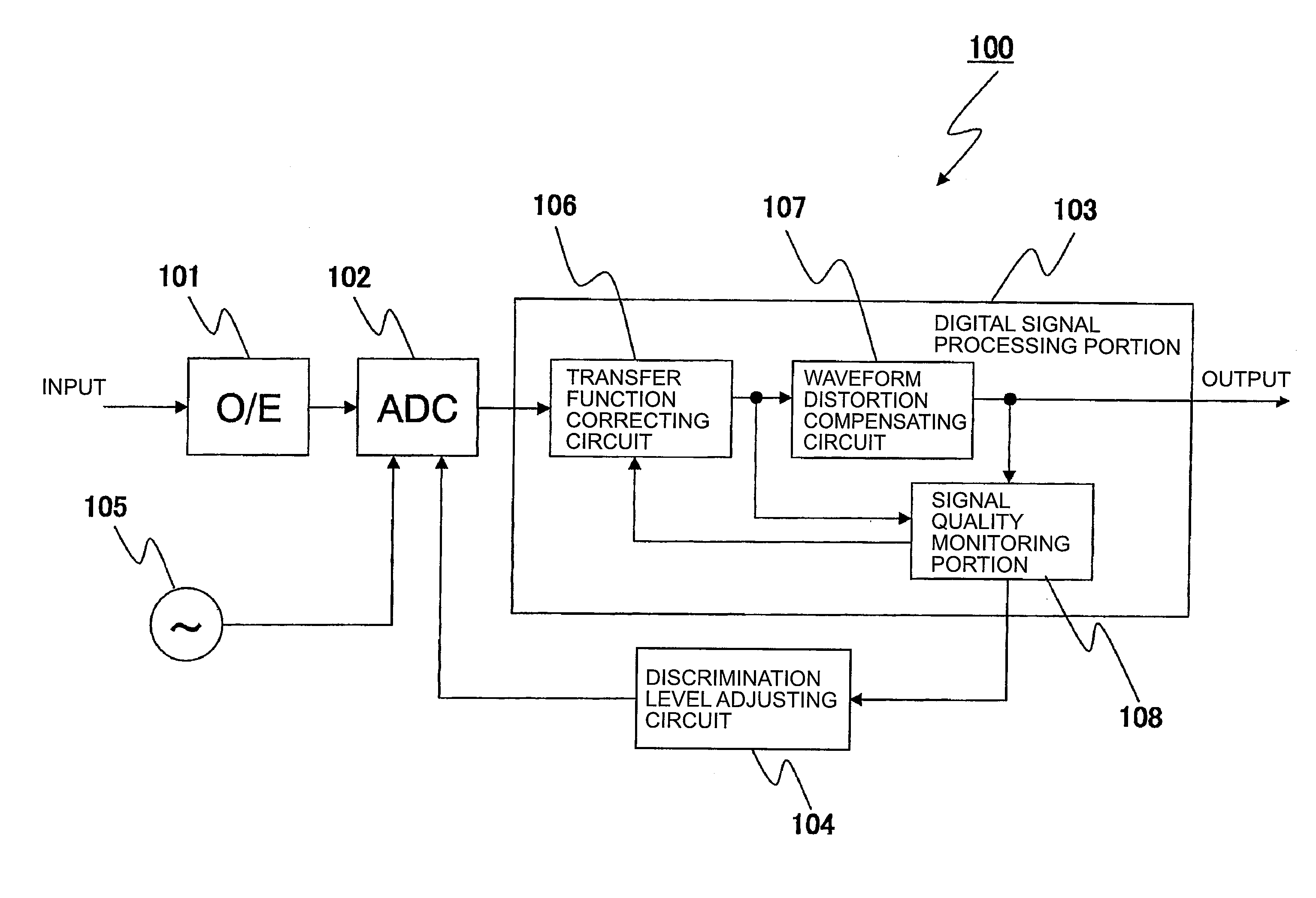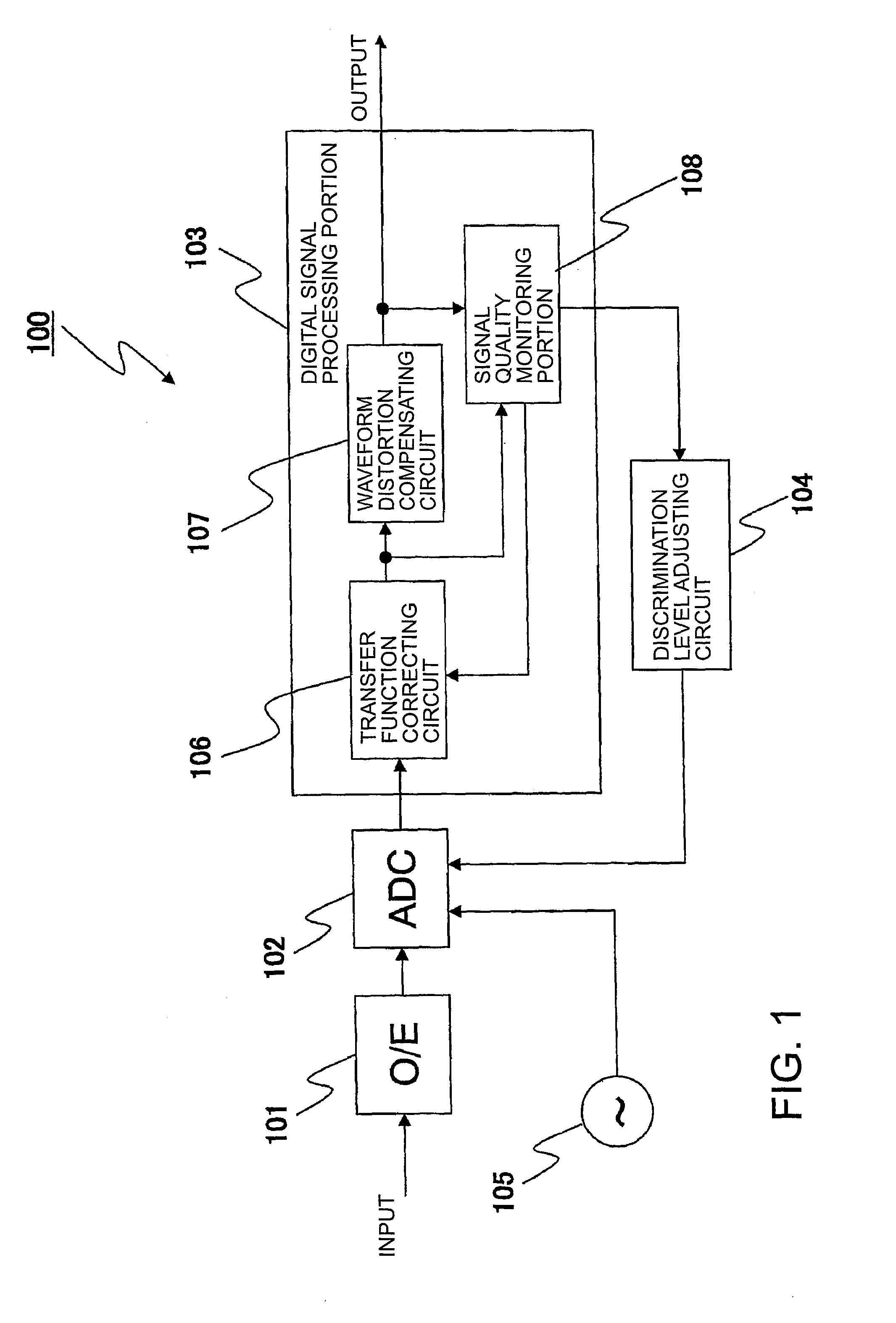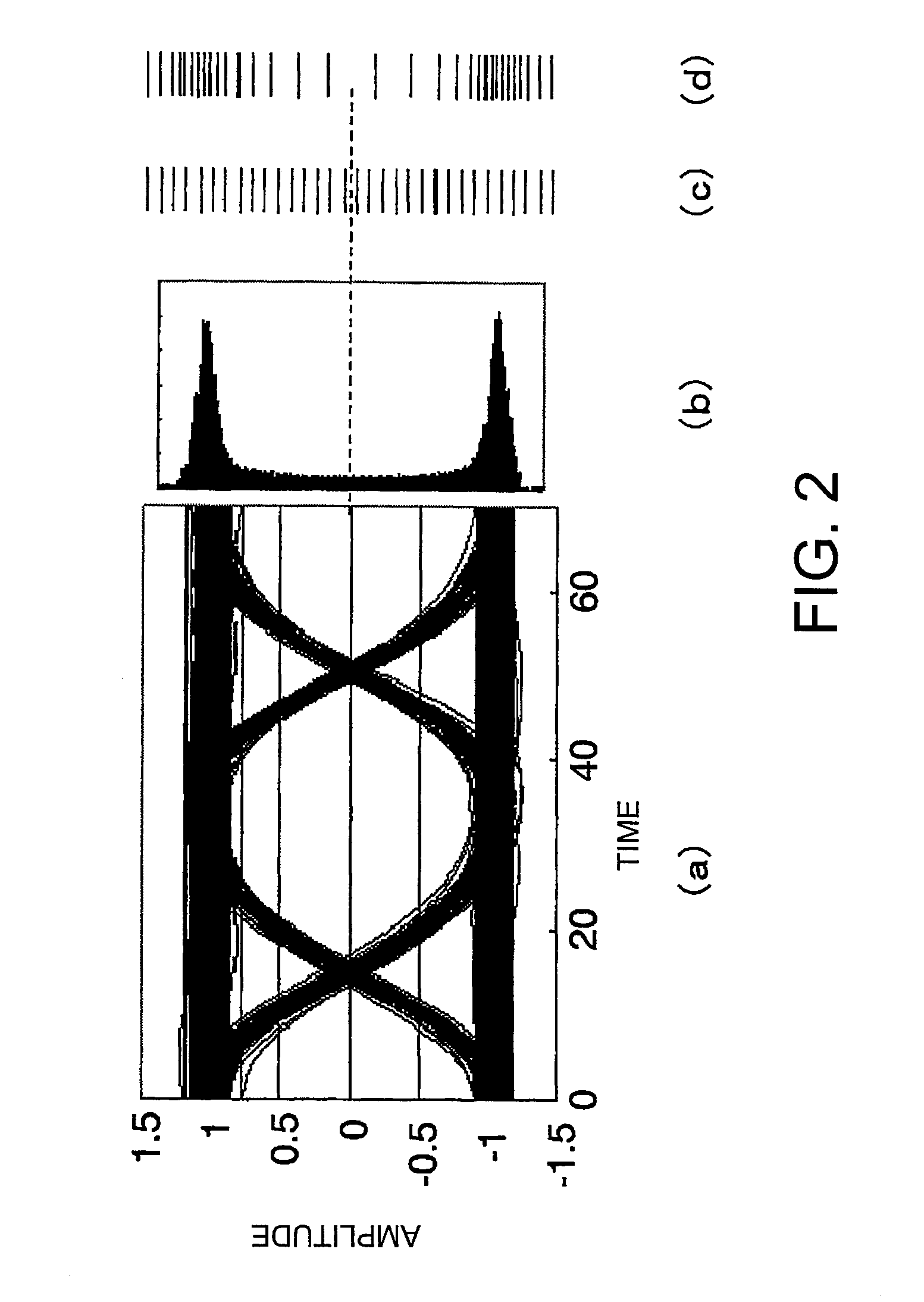Digital receiver and optical communication system that uses same
a digital receiver and optical communication technology, applied in the field of digital receivers and optical communication systems, can solve the problems of difficult balance between high resolution and high speed, high cost, and so as to prevent physical lack of resolution of analog-to-digital converters from deteriorating the reception precision of digital receivers
- Summary
- Abstract
- Description
- Claims
- Application Information
AI Technical Summary
Benefits of technology
Problems solved by technology
Method used
Image
Examples
first embodiment
[0039]FIG. 1 illustrates the schematic configuration of a digital receiver according to this invention. The illustrated digital receiver 100, includes an optical-to-electrical (OE) converter 101, an analog-to-digital (AD) converter (ADC) 102, a digital signal processing portion 103, a discrimination level adjusting circuit 104, and an AD converter discrimination clock 105.
[0040]The optical-to-electrical converter 101 converts an optical input signal into an analog electrical signal.
[0041]The AD converter 102 converts an analog electrical signal (analog input signal) into a digital signal. The AD converter 102 also sets a plurality of discrimination levels used as a criterion in AD conversion in accordance with a discrimination level control signal from the discrimination level adjusting circuit 104. The AD converter 102 thus functions as analog-to-digital conversion means for setting discrimination levels in accordance with the discrimination level control signal, converting an anal...
second embodiment
[0061]A digital receiver according to this invention is described next.
[0062]FIG. 4 is a block diagram illustrating the schematic configuration of the digital receiver according to this embodiment. Components that are the same as those of the digital receiver of FIG. 1 are denoted by the same symbols in order to omit descriptions thereof.
[0063]The digital receiver of FIG. 4 which is denoted by 300 uses a Dual Polarization (DP)-QPSK signal as an input signal. The input signal is given to the digital receiver 300 via an optical transmission path 301, which is a dispersing medium.
[0064]The digital receiver 300 includes, as illustrated, a local oscillator light source 302, a pair of polarization beam splitters (PBSs) 303-1 and 303-2, a pair of 90°-hybrids 304-1 and 304-2, a local oscillator light phase monitor 305, and a local oscillator light phase adjusting portion 306.
[0065]The digital receiver 300 also includes four optical-to-electrical converters 101-1 to 101-4, four analog-to-dig...
third embodiment
[0089]A digital receiver according to this invention is described next with reference to FIG. 7. In FIG. 7, components that are the same as those of the digital receiver of FIG. 4 are denoted by the same symbols in order to omit descriptions thereof.
[0090]The signal quality monitoring portion 108 of the digital receiver 600 illustrated in FIG. 7 includes a level distribution / gradient estimating portion 601, a waveform equalization error monitor 602, and a bit error rate (BER) monitor 603.
[0091]The level distribution / gradient estimating portion 601 doubles as the waveform monitoring portion 308 and level distribution / gradient estimating portion 307 of FIG. 4.
[0092]The waveform equalization error monitor 602 monitors a difference between the waveform of an output signal that is output from the waveform distortion compensating circuit 107 and an ideal waveform, namely, a waveform equalization error. The BER monitor 603 monitors the bit error rate of the output signal. The waveform equa...
PUM
 Login to View More
Login to View More Abstract
Description
Claims
Application Information
 Login to View More
Login to View More - R&D
- Intellectual Property
- Life Sciences
- Materials
- Tech Scout
- Unparalleled Data Quality
- Higher Quality Content
- 60% Fewer Hallucinations
Browse by: Latest US Patents, China's latest patents, Technical Efficacy Thesaurus, Application Domain, Technology Topic, Popular Technical Reports.
© 2025 PatSnap. All rights reserved.Legal|Privacy policy|Modern Slavery Act Transparency Statement|Sitemap|About US| Contact US: help@patsnap.com



